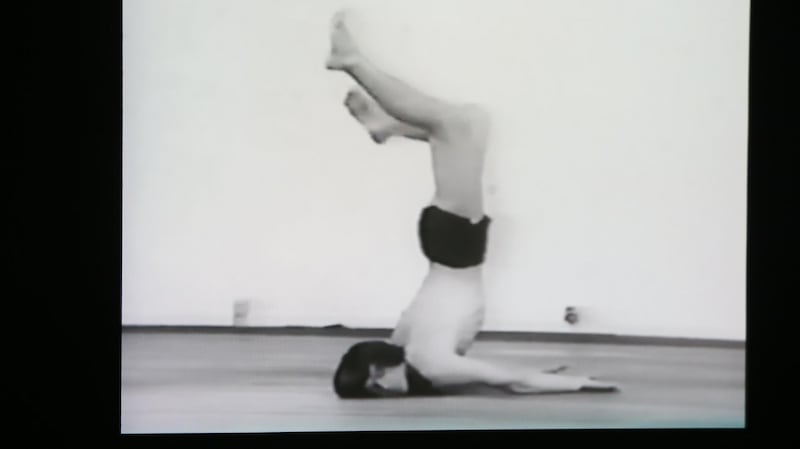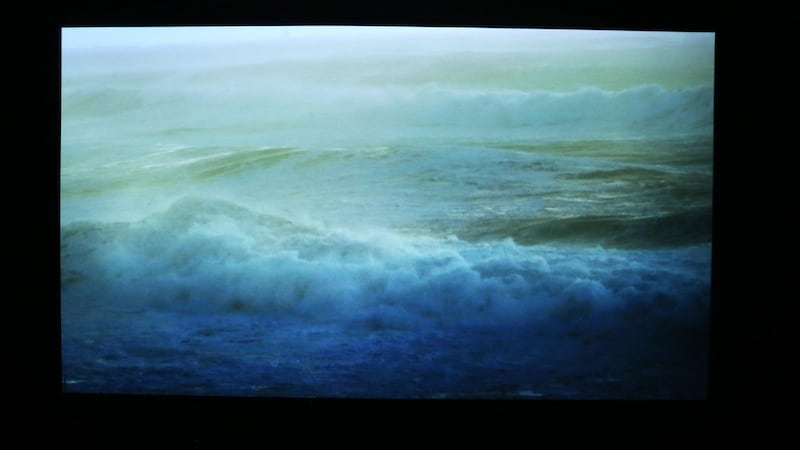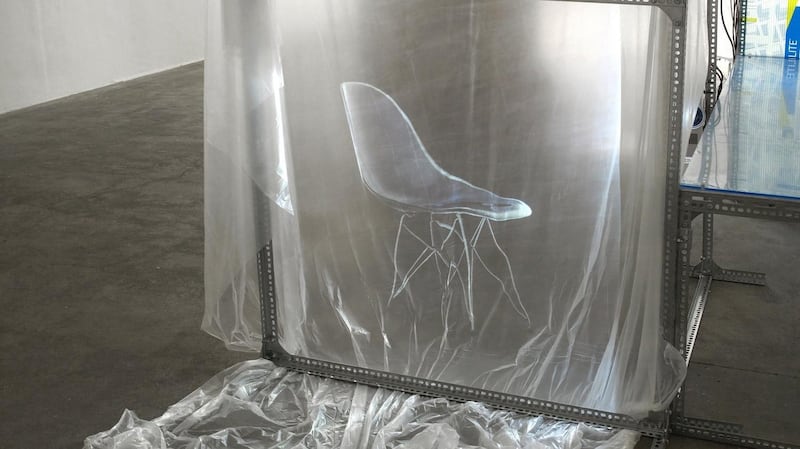Hennessy Art Fund for Imma Collection **
Irish Museum of Modern Art, Kilmainham, Dublin 8. Until November 26th imma.ie
Once upon a time, the Irish Museum of Modern Art had €600,000 a year to buy art. This seems like a lot until you consider how much the most wantable works in the world sell for. In an art world of exceptionally inflated prices at the top end, the trick for a museum such as Imma is to buy with all the expertise and intelligence they can muster, and acquire works before the artists in question go out of their fiscal reach.
The recession slashed even that budget, and the team at Imma is to be congratulated for raising funds and sponsorships to keep Ireland’s national collection from having too many gaping holes in the story it can tell of contemporary art. This is the second year of the Hennessy Art Fund, which has a value of €50,000 a year, and provides for the purchase of work by artists not already in the Imma collection, and which have been made in the past five years.
So far, so good. But at this year's exhibition, you get the sense that the intellectual side of the selection process took over. To be fair, art works thrive in solo shows by their makers, where you can see or sense a cumulative narrative or experience in full. Group shows can also draw out stories, and create conversations. For example, a Hennessy acquisition from last year, David Beattie's The Impossibility of an Island, sat until last Sunday in Imma's excellent As Above, So Below, contributing its voice to the account of spirituality in art.
That's the thing about collections – they preserve art works for the future. Put it this way: the works we know as famous today, that define the history of art, are the ones that have been collected, and there's a lot more at stake than one might think. Art becomes a backstory to cultural history and ideas of taste, part of the fabric of our understanding of what was important in the past, and what remains important today. When I interviewed former Tate director Nicholas Serota last year, he agreed that Tate had a huge disproportion of male to female artists in their collection. You could almost form the belief that women didn't make art in the past, and from that come to the opinion that they weren't fully present in cultural and civic life.
History-making
“You can re-make the canon to a degree,” Serota said at the time. “It’s particularly difficult to do it if you go back before probably about 1950 [but] the core narrative of what art looks like, that is, the art that is valued, is changing.” This means there’s a great deal for curators to think about when adding works to a collection. In a sense they’re engaged in history-making.
Here, out of the context of curated solo or group shows, with nothing to connect them save that Imma has recently acquired them, the works have to stand for themselves, alone. Of course, good art should do this with insistent ease, but somehow this quartet seems to falter. Ciarán Murphy's barely-there paintings are elegant, but in a stand-back-and-marvel-at-their-cold-empty-distance kind of a way. I could see this one, L-2 (2013), sing in a carefully curated painting show, but here the sounds from Mairéad McCean's No More (2014) next door spill over, and L-2 fades into the role of anteroom player.

There's a phrase a clever friend once used: art that looks like art; and this keeps returning to me as I look. It's hard to know what's missing. The works definitely look like art. McClean's piece is a tricky one. Does an art work about internment have more gravitas if the artist's own father was interned? McClean's was, in 1971/72. She's set scenes of a dancer from the same period against footage of Brian Faulkner, Northern Ireland's last prime minister, announcing the policy of imprisonment without trial. A pair of letters from the young McClean to her imprisoned father lead you to the work. Internment is awful. Dancers are free. Families have something taken from them that they will never get back. However, contemporary resonances cause the clear certainties of No More to leave me wanting more. In 2014, this piece won the inaugural Belfast-based MAC International art prize, worth £20,000, so maybe Imma had to have it?

Mark Garry's North of the West (2017) is a large projection of the various moods of a tumultuous sea at Mullaghmore. Flick the switch on the accompanying record player, and you get a soundtrack too. Garry is a strong artist, and many of his installations are extraordinary. His exhibition at Athlone's Luan Gallery earlier this year, from which this piece came, was a cumulative build, all the parts contributing to a highly satisfying sum, but here, again, I'm left wanting.
Arty title
Yuri Pattison's transparency, hybrid viscosity (communal table v.00P) (2017) clearly has a very arty title. Pattison won the Frieze Artist Award last year with a different piece, so you can see why it was decided that Imma ought to have his work in the collection.

The Frieze piece was a “crisis trolley”, a set of monitors showing snatches of conversation picked up from the halls of the art fair, the machine trawling for key words, always monitoring, always producing data made up from the ephemera of our private chat. At Imma, Pattison’s work is an installation consisting of a table and some plastic chairs, plastic sheeting and an attractively wafting projection of a chair on some swaying plastic sheeting. A helpful tract tells me what it’s about: communal work spaces, digital and hacker economies, and the disposable nature of consumer culture; it all sounds very interesting. It’s possible that, as with Murphy’s painting, Pattison’s piece needs a better context to come into its own.
There are as many schools of thought about what makes good art as there are types of art in the first place. One is the institutional idea that art needs to be difficult. This is often driven through intellectualising discourses in art colleges, and exacerbated by the trend towards practice-based PhDs for artists. It can add layers of context and meaning to the initiated, but it can also kill the instinct for what is good on levels other than the purely cerebral.
It is vital that Imma continue to collect, and these artists deserve their place in our national narrative. But in the works chosen, I can't help feeling that the idea of what was important became conflated with what was difficult, the value of theory trumping other content. Overall, I find I'm missing something, and finally I realise what it is. I'm looking for soul to go with the skill. Maybe future Hennessy years will even out the balance, but for now, if you are a soul-seeker too, go upstairs instead and find it in Nan Goldin's 1985 epic The Ballad of Sexual Dependency (until October 15th). It's there, in spades.
Imma, Kilmainham, Dublin 8. Until November 26th imma.ie










